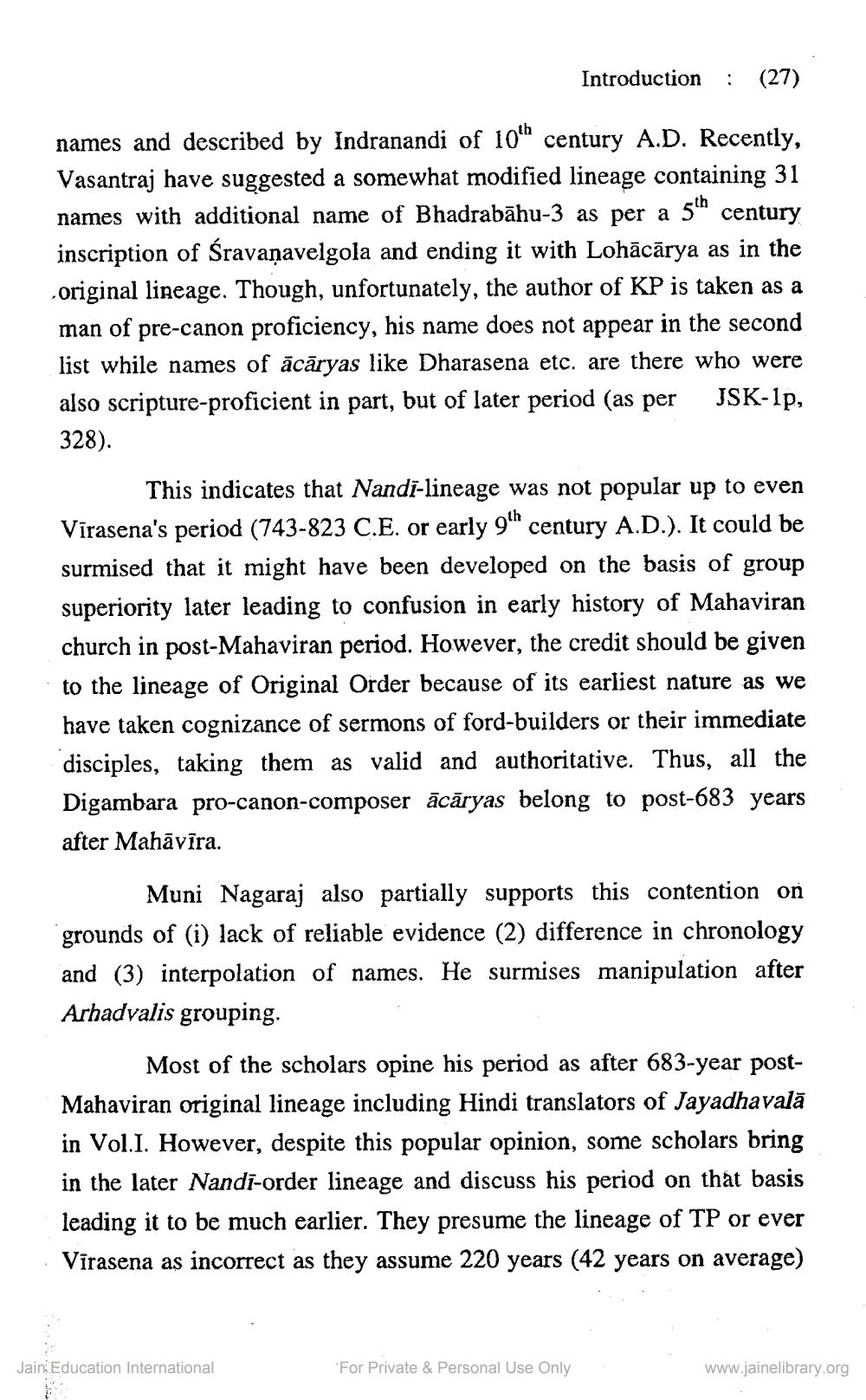________________
Introduction
:
(27)
names and described by Indranandi of 10' century A.D. Recently, Vasantraj have suggested a somewhat modified lineage containing 31 names with additional name of Bhadrabāhu-3 as per a 5th century inscription of Śravaņavelgola and ending it with Lohācārya as in the original lineage. Though, unfortunately, the author of KP is taken as a man of pre-canon proficiency, his name does not appear in the second list while names of ācāryas like Dharasena etc. are there who were also scripture-proficient in part, but of later period (as per JSK-1p, 328)
This indicates that Nandî-lineage was not popular up to even Vīrasena's period (743-823 C.E. or early 9h century A.D.). It could be surmised that it might have been developed on the basis of group superiority later leading to confusion in early history of Mahaviran church in post-Mahaviran period. However, the credit should be given to the lineage of Original Order because of its earliest nature as we have taken cognizance of sermons of ford-builders or their immediate disciples, taking them as valid and authoritative. Thus, all the Digambara pro-canon-composer ācāryas belong to post-683 years after Mahāvīra.
Muni Nagaraj also partially supports this contention on grounds of (i) lack of reliable evidence (2) difference in chronology and (3) interpolation of names. He surmises manipulation after Arhadvalis grouping.
Most of the scholars opine his period as after 683-year postMahaviran original lineage including Hindi translators of Jayadhavală in Vol.I. However, despite this popular opinion, some scholars bring in the later Nandi-order lineage and discuss his period on that basis leading it to be much earlier. They presume the lineage of TP or ever Vīrasena as incorrect as they assume 220 years (42 years on average)
Jain Education International
*For Private & Personal Use Only
www.jainelibrary.org




